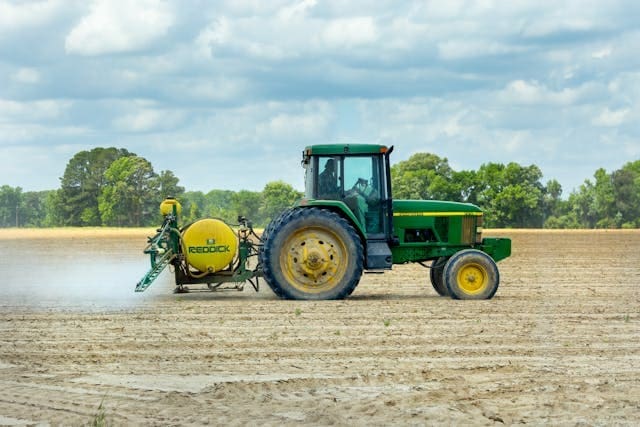New Jersey’s drought found some significant relief over the weekend with continued rainfall; however, the fight is not over.
The prolonged dry conditions are having significant impacts on agriculture across the state. While the bulk of the harvest season has concluded, the drought continues to affect other key agricultural sectors, raising concerns about future production and the increased risk of wildfires.
Peter Furey, executive director of the New Jersey Farm Bureau, emphasized that most crops for the year, including grains and vegetables, were already harvested before the drought began in mid-September. However, the lack of rainfall since then is exacerbating challenges for other agricultural commodities.
Among the most impacted is the nursery industry, the largest sector of its kind in the state. Many unsold plants are struggling due to insufficient watering, as they were either left in the ground or in pots for the winter. Additionally, the state’s livestock industry is facing rising costs due to the dry conditions. With pastures parched and water supply running low, farmers are incurring out-of-pocket expenses to provide feed and drinking water for their animals.
Furey also highlighted the complete loss of a third cutting for hay, another blow to farmers. While these impacts are significant, Furey noted that the overall damage to agriculture is not as severe as it could have been, given the timing of the drought.
Despite the challenges, some crops have fared better. Corn and soybean yields are slightly below normal, but Furey explained that the drought did not result in total crop failure. The quality of these crops remains good, though market prices are low due to broader economic conditions, not the drought itself. Cranberries, another key crop, have had a nearly normal yield, though farmers face difficulties managing the water-based harvest process and ensuring vines are protected during winter.
The timing of the drought, which followed a period of healthy rainfall earlier in the year, has provided some respite. Farmers had enough moisture to prepare the soil and crops before the dry spell set in, and grain harvests, which would normally require propane drying, were naturally dried by the drought—saving on energy costs.
Despite these positives, the drought continues to pose risks. Farmers with land near forests are concerned about wildfires, which have been more frequent in the region this year due to dry conditions. The New Jersey Forest Fire Service has responded to more than 530 fires since early October, a significant increase from last year. The situation is exacerbated by the difficulty of planting cover crops, which are essential for soil conservation during the winter. The dry soil has made it nearly impossible to plant these crops without irrigation, further driving up costs.
Looking ahead to 2025, the future of crops such as apples and peaches remains uncertain. If the drought persists into the winter and spring, it could lead to moisture shortages that affect budding trees. However, Furey remains hopeful that with a change in weather patterns, conditions may improve.
In the meantime, the New Jersey farm community continues to face the immediate challenges of an unprecedented drought, while also preparing for the possibility of more frequent droughts in the years to come. With ongoing concerns about wildfires and soil health, the full impact of this drought may not be clear for months.
The New Jersey Digest is a new jersey magazine that has chronicled daily life in the Garden State for over 10 years.
- Staffhttps://thedigestonline.com/author/thedigeststaff/
- Staffhttps://thedigestonline.com/author/thedigeststaff/
- Staffhttps://thedigestonline.com/author/thedigeststaff/
- Staffhttps://thedigestonline.com/author/thedigeststaff/


